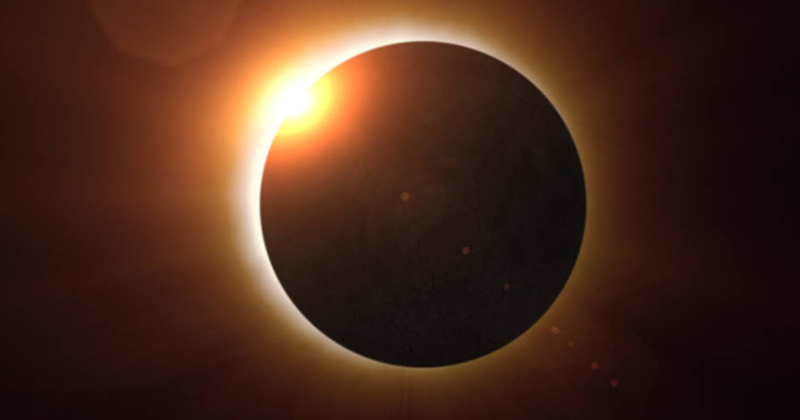The common notion is that there rest millions of wonders up above in the skies and that all it takes to unravel them is to delve deep in the mysteries hovering over our head. But this very grandma-like statement is more mired in truth than saddled with mysteries. And while yes the physicians and astronomers and even cosmologists (or anyone even loosely connected with space) are aware of the myriad wonders there, it’s not that the layman is beyond such pleasures.
A simple reason to understand this is the phenomenon called a solar eclipse.
Regardless of what country you belong to or what year you may be in, it’s highly possible that each one of us has come across the eccentric beauty that the cosmos presents through the phenomenon called a solar eclipse.
In fact, we are amid times where we are constantly struggling with something uninspiring and run-of-the-mill, usual disturbances happening out of the lockdown.
For much of the year, we’ve heard tales of fatalities and the rising rate of Coronavirus cases. But on June 21, things would be different.
On June 21, 2020 you can be sure to hear a different tale altogether, if only for a small instance of time.
Wondering why- well, it’s being said that the deepest solar eclipse the country has come to witness is going to take place on the particular late.
All of that being told, the following news report came from Times Now and makes the matter more interesting than perhaps usual. So let’s give it a read and find out the sheer magnificence of what lays ahead:

India will reportedly witness the ‘deepest’ annular solar eclipse of the century on June 21, and the sun may appear as a necklace for around 30 seconds instead of the usual ‘Ring of Fire’. This phenomenon will be witnessed in Rajasthan, Haryana, and Uttrakhand while the rest of the country will observe a partial solar eclipse, suggests the report.
Ajay Talwar, an astrophotographer told Times of India, “Instead of a wide fiery ring, the sun may appear as a necklace of shiny beads (known as Baily’s Beads) due to light filtering through Moon’s hills and valleys.”
During the annular solar eclipse, the moon will reportedly cover up to 98.8 per cent of the sun’s disc which will cause the ring around the sun to look very thin.
That being said, as is always the question pertaining to a solar eclipse, it’s important to note what is the visibility related to the big bustling light ahead?
Apparently, this upcoming solar eclipse is going to begin in the morning. On June 21, the solar eclipse will begin from the morning hours. The “Surya Grahan,” as it’s called is due to begin from 9.30 am. That told, it is expected to peak at around 12 noon. Furthermore, it is also important to note that the solar eclipse will conclude at approximately 3.04 PM in the country.
Suggested Read: Researchers Are Puzzling Over Weakening Earth’s Magnetic Field – Is Polar Reversal Coming?
So there it is. Fans, enthusiasts and anyone interested in understanding the wonderful amusements associated with the solar eclipse has the thing sorted. You now know when and how long to catch the solar eclipse.
Let’s hope June 21 makes for a spectacular photo-clicking event of sorts.


